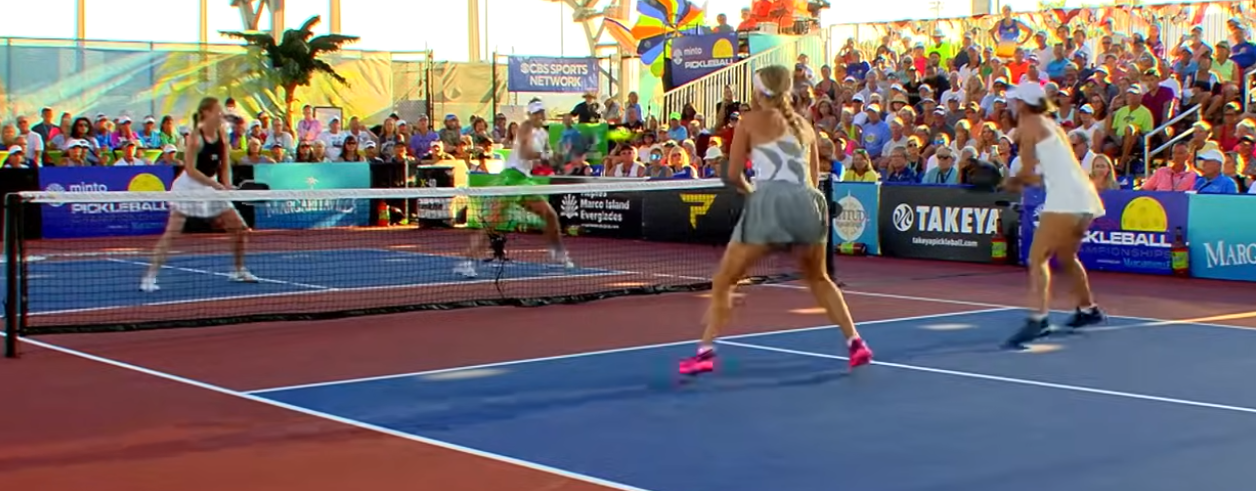Master the Rules, Then Bend Them Like a Pro
Pickleball looks easy — until you realize there’s a whole underground world of unwritten moves, mental tricks, and quiet rule-bending that separates casual players from killers on the court.
Anyone can learn the rules.
Winners weaponize them.
In this Ace Pickleball Pro guide, you’re not just getting the “official” rules — you’re unlocking the real-world tactics that top players use to control momentum, outsmart opponents, and win even when it feels impossible.
So lace up, grip up, and lean in.
It’s time to learn how the game is really played.
1. Master the Serve: Start the Battle Before the Ball Lands
The Moment:
Your paddle connects, the ball hangs midair — and your gut drops. It’s floating too high, too short. Your opponent smirks and pounces.
Basic Rule:
- Serve underhand with an upward motion.
- Paddle contact must be below the waist.
- Ball must land diagonally across into the service box.
Hidden Strategy:
The serve is your one shot at pure dominance.
Elite players send deep, slicing serves to pin opponents behind the baseline, forcing defensive returns.
Court Whisper:
“Develop a legal topspin serve — subtle but nasty. It makes returns float just enough to smash them down.”
👉 Learn how to get more spin in pickleball.
2. Embrace the Double Bounce Rule: Engineer Your Attack
The Moment:
You charge too soon, the ball dies in front of you — and you’re stuck, lunging.
Basic Rule:
- The ball must bounce once on each side before volleys are allowed.
Hidden Strategy:
This forces a “neutral game.”
Top players use the bounce phase to read the court and set up a winning third-shot drop or drive.
Court Whisper:
“Elite players don’t react — they predict. Track the opponent’s paddle angle and move before they hit.”
3. Conquer the Non-Volley Zone (Kitchen): Rule the Soft Game
The Moment:
You lunge at a ball near the net… and overstep, faulting into the kitchen. Rookie mistake.
Basic Rule:
- No volleying in the kitchen.
- No momentum carrying into the kitchen after a volley.
Hidden Strategy:
The kitchen is your chaos control station.
Great players use disguised dinks to lure attacks — and punish with sudden lobs or speedups.
Court Whisper:
“Approach like you’re going to dink… then flick it deep when they least expect it.”
👉 Learn more about kitchen rules here.
4. Decode the Scoring System: Apply Psychological Pressure
The Moment:
You lose track of the score — and worse, lose track of the moment.
Basic Rule:
- Only the serving team can score.
- Call scores as server’s score, receiver’s score, server number (1 or 2).
Hidden Strategy:
Serving isn’t just a rule — it’s momentum warfare.
Winning on serve tightens the noose on opponents, even when the score feels close.
Court Whisper:
“Every lost serve without points? It eats at their confidence even more than the scoreboard shows.”
👉 Learn how to keep score like a pro.
Strategy Tip: Call out the score before every serve to avoid confusion.
5. Avoid Common Faults: Turn Mistakes Into Intel
The Moment:
A kitchen violation here, a lazy out-of-bounds there — suddenly you’re handing away points.
Common Faults:
- Kitchen violations
- Out-of-bounds hits
- Serve faults
- Net touches
Hidden Strategy:
Fault patterns = opponent stress signals.
Watch closely: players who foot-fault often under pressure usually crumble under long rallies.
Court Whisper:
“Every fault is a blinking warning light. Find their breaking point before they even realize it.”
6. Master the Two-Bounce Rule on Returns: Build Mid-Court Domination
The Moment:
You hover too long in no-man’s land — and eat a body shot.
Basic Rule:
- Let the ball bounce once on each side after the serve.
Hidden Strategy:
Mid-court mastery wins games.
Position yourself after the second bounce to seize net control instantly.
Court Whisper:
“Split-step after every return bounce — it’s the difference between scrambling and striking.”
7. Make Smart Line Calls: Own the Mind Game
The Moment:
You call a tight ball out. Your opponent glares. The match shifts.
Basic Rule:
- If the ball touches the line, it’s in.
- Full ball outside = out.
Hidden Strategy:
Fair play isn’t just honor — it’s strategy.
Players trusted to call clean lines psychologically dominate because opponents hesitate.
Court Whisper:
“Win respect early — they’ll second-guess their own shots by mid-match.”
8. Switch Sides Strategically: Read Nature’s Playbook
The Moment:
Sun glare blinds you after switching sides — and you shank the serve.
Basic Rule:
- Switch sides at 6, 8, or 11 points depending on the match format.
Hidden Strategy:
Wind, sun, glare — they all tilt the court subtly.
Savvy players adjust their shot selection the moment sides flip.
Court Whisper:
“Windy day? Practice slicing side serves before game day. You’ll break serves others can’t even land.”
9. Play Doubles Like Chess: Not Checkers
The Moment:
You and your partner both lunge for the same ball — and gift-wrap a point.
Basic Rule:
- Right-side server starts first.
- Right if score even, left if odd.
Hidden Strategy:
Stacking, poaching, silent signals — true doubles dominance feels choreographed.
Court Whisper:
“Flash hand signals behind your back on serves — every great team does it.”
👉 Beginner doubles strategy tips here.
10. Handle Let Serves Like a Pro: Reset Your Mind
The Moment:
The ball clips the net, lands good — let serve. You tense up, lose focus, and flub the replay.
Basic Rule:
- Let serve = replay if ball lands in.
- Out = fault.
Hidden Strategy:
Let serves are mental resets.
Champions breathe, reset footwork, and restart with intent — not frustration.
Court Whisper:
“Treat lets like a free timeout — not a curse. It’s a gift if you know how to use it.”
Top 3 Pickleball Mistakes (and How to Dodge Them)
1. Rushing the Net Too Early
Charging forward before the bounce rule is satisfied leaves you open to lobs and quick counters.
👉 Solution: Master your third-shot drop and third-shot drives so you transition smoothly.
2. Ignoring Your Partner’s Court Position
In doubles, moving without awareness causes chaos — and free points for your opponents.
👉 Solution: Communicate before each serve with quick hand signals and call switches out loud.
3. Failing to Adapt to Wind & Sun
Stubborn players don’t adjust their shot styles based on weather — and it costs them dearly.
👉 Solution: After every side switch, consciously adjust your serve angle and shot heights.
Pickleball’s Future Shock: Why Mastering Rules Today Makes Champions Tomorrow
Pickleball’s future is bigger than rec games — it’s eyeing the Olympics by 2032.
Pro players are blending tennis footwork, badminton deception, and pure raw creativity.
The rules aren’t changing — but the way elite players bend them will.
Picture yourself courtside in Brisbane, 2032, paddle in hand, as thousands cheer.
The winners won’t be the ones who “knew the rules.”
It’ll be those who weaponized them.
P.S.
The players you admire? The ones who make it look easy?
Yeah, they know these rules — but they also know how to break them without breaking them.
Learn the secrets, weaponize the rules, and soon enough, it’ll be you running the court. Let’s go.

